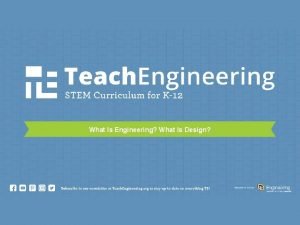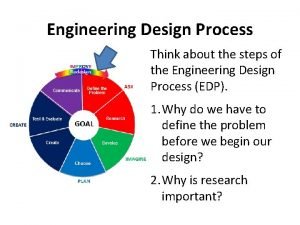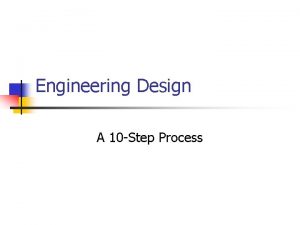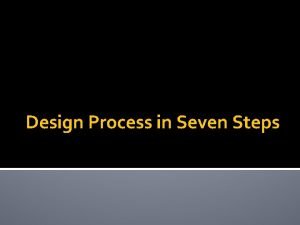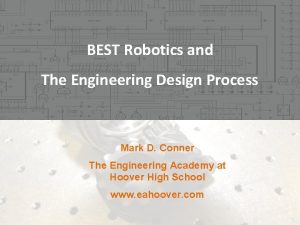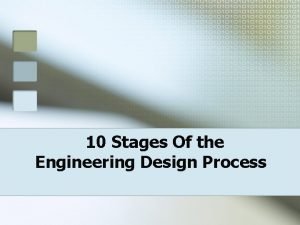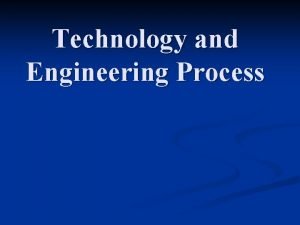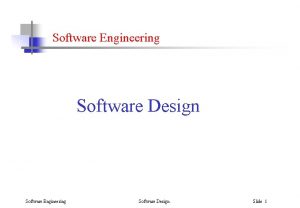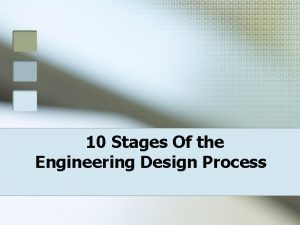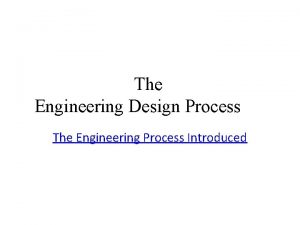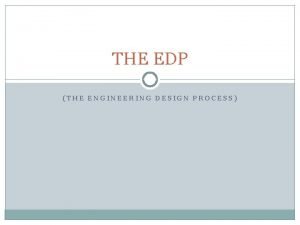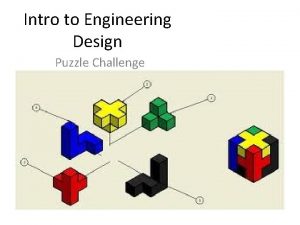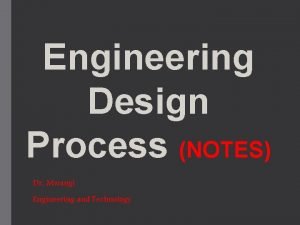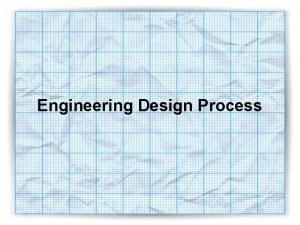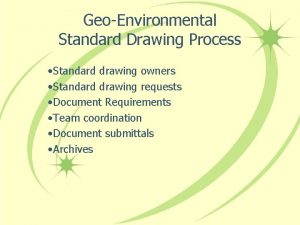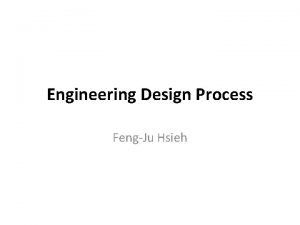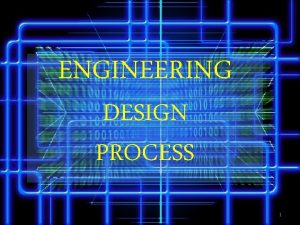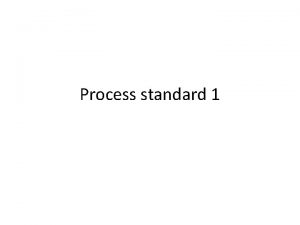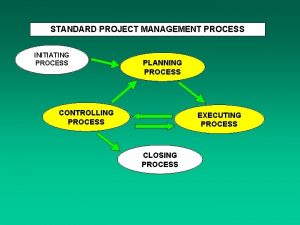Engineering Design Process Learning Standard 2 Engineering Design














- Slides: 14

Engineering Design Process

Learning Standard 2. Engineering Design is an iterative process that involves modeling and optimizing to develop technical solutions to problems within given constraints. 2. 1 Identify and explain the steps of the Engineering Design Process, i. e. , identify the need or problem, research the problem, develop possible solutions, select the best possible solution(s), construct a prototype, test and evaluate, communicate the solution(s), and redesign

Learning Objectives Students will be able to 1) Describe & explain the Engineering Design Process 2) Understand & explain how the Engineering Design Process is used? 3) List the 8 steps of the Engineering Design Process in their correct order 4) Use the Engineering Design Process to solve a real world problem

What is an Engineer? A person that: • Designs new technology or • Improves existing technology Using creativity & understanding of materials, tools, math & science

Engineering Design is an iterative process that involves modeling and optimizing to develop technical solutions to problems within given constraints. Iterative: Repeating

People that create technology follow a series of 8 steps called the Engineering Design Process Engineering: Uses scientific discoveries to create new technology Design: A plan Process: A set of steps that lead to a result

Step 1 Identify the need or the problem * What is the problem? * What do we need?

Step 2 Research the need or the problem * What is the current solution to the problem or need?

Step 3 Develop possible solution(s) * Brainstorm * Make a list of your ideas

Step 4 Select the best possible solution(s) * Which solution(s) best solve the original problem?

Step 5 Construct a prototype * Create a drawing or model of the solution(s) that you think will best solve the problem

Step 6 Test & Evaluate the solution(s) * Does it work? * How do you know?

Step 7 Communicate the solution(s) * Make a presentation showing how the solution solves the problem * Discuss any tradeoffs * Discuss any negative impacts

Step 8 Redesign (if necessary) * Modify solution using info from tests & presentation (if necessary)
 Cuadro comparativo de e-learning
Cuadro comparativo de e-learning Engineering design process quiz answers
Engineering design process quiz answers Basic engineering design process
Basic engineering design process What are the steps for the engineering design process
What are the steps for the engineering design process 10 step design process
10 step design process What are the 7 steps of the engineering design process
What are the 7 steps of the engineering design process Engineering design process
Engineering design process Stages of engineering
Stages of engineering Engineering design process song
Engineering design process song Software engineering
Software engineering The 10 steps of the engineering design process
The 10 steps of the engineering design process Who is it from
Who is it from Edp engineering design process
Edp engineering design process Kahoot engineering design process
Kahoot engineering design process Process design notes
Process design notes

